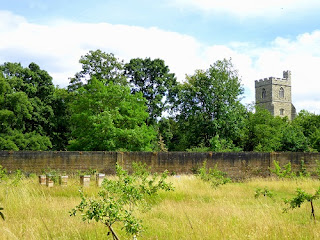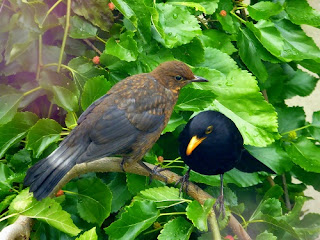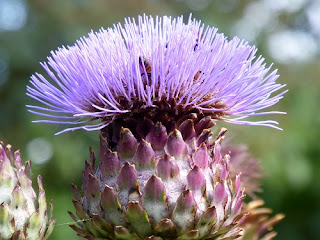Regular readers (if such there be) will have noted the regular clashes, joshes and occasional agreements I've had in the comments section with the chap I often call Sir David. 'Damant,' as he always announced himself when he phoned up ('Damant here - now, dear boy...') was found at home in Stamford, dead of a heart attack at 83. For such a bon viveur, he made a remarkably good innings, and one can't imagine him fading away slowly, so it was in a way good for him. A shock to those of us, though, who held him as a very dear friend: maddening, provocative, with the carapace of a Tory but the soul of the best kind of liberal, robustly gay, above all incredibly kind. He never spoke ill of people, taking as his motto 'all God's chillun got wings'. He could bang on about the same thing over and over again, as he often did in the comments here, and then come out with something fresh and thoughtful.
There aren't enough pictures of him, so I limit myself to a shot up top taken at the Sussex home of our mutual friends Eben and Themy Hamilton (J, my partner, has, on request, had to be excised), and one more of him at one of the 12 Star Gallery events, in company with the splendid Andrew Logan.
It's not my intention to provide any kind of obit here, but I must reproduce a discovery which made us laugh through tears, since it came to life, as it were, some weeks after his death when J was searching through references and tributes. We'd known nothing about it, but it's so absolutely characteristic. I take the liberty of reproducing from the Stamford Mercury of 31 July.
Classical music fan denied permission to broadcast songs from St Michael's Churchyard in Stamford
By Steve Cresswell
A classical music fan is the latest to be refused permission to put on entertainment in a Stamford graveyard.
David Damant, 83, was hoping to play videos of classical music through a television and speakers in St Michael's Churchyard to enrich the High Street shopping experience.
But members of Stamford Town Council voted by majority to deny the request during a meeting on Tuesday (29 July).
St Michael's Churchyard in Stamford
They stressed the area was meant for 'quiet contmeplation' while also raising concerns about crowds and social distancing.
Coun Elaine Hoope (Ind) added: 'We should also have respect for the people buried there.' ...
Mr Damant said he was relatively new to the town and was not aware the churchyard was meant to be an oasis of calm.
He said: 'As I am a new boy in Stamford - only three years - I have not been aware of the ins and outs of this splendid town.
'Obviously if that space next to St Michael's Church is for quiet contemplation it would hardly be suitable for me to have the Queen of the Night exclaiming away!'
A former key player in the world of international finance and accounting, his place was to show 21 videos while delivering the occasional commentary. Artists included the late Vera Lynn, the 'Forces Sweetheart,' who passed away in June.
'My aim was to have a jolly really,' said Mr Damant, who lives at Torkington Gardens. 'I'm always thinking of things to amuse me.
'I also think that everyone should be passionate about classical music. Composers like Mozart and Bach are like Shakespeare, Dostoyevsky and Rembrands - the greatest achievements of the human race.'
Asked if he was disappointed by the council's decision, Mr Damant replied: 'My dear boy, I don't have emotions about these things. I'm a stoic and rather detached.'
With the situation in Spain and Manchester, he said he had decided to put the plan on hold until the right time. At that point he may apply to 'perform' on the High Street.
'I won't do it until we are in a position to have an outdoor crowd,' he said. 'Who knows when that might be though. It's all quite a nuisance'.
Who knows when we will be able to hold a 'jolly' at his beloved Garrick Club? Without a doubt it must include some of those top artists who always enjoyed performing for him, including Sue Bullock, Jean Rigby, Iestyn Davies and Robert Hayward. His idea of the absolute zenith of music-drama was the scene where Don Giovanni kills the Commendatore. That will be a cornerstone. Otherwise, still no news on a service of any kind. I'll keep you posted. UPDATE: See Father Andrew Hammond's comment below with details of a Thursday service online. FOOTNOTE: I just revisited this post about on Brexit, the EU and disinformation and found one of Sir David's most sagacious comments below.




















































